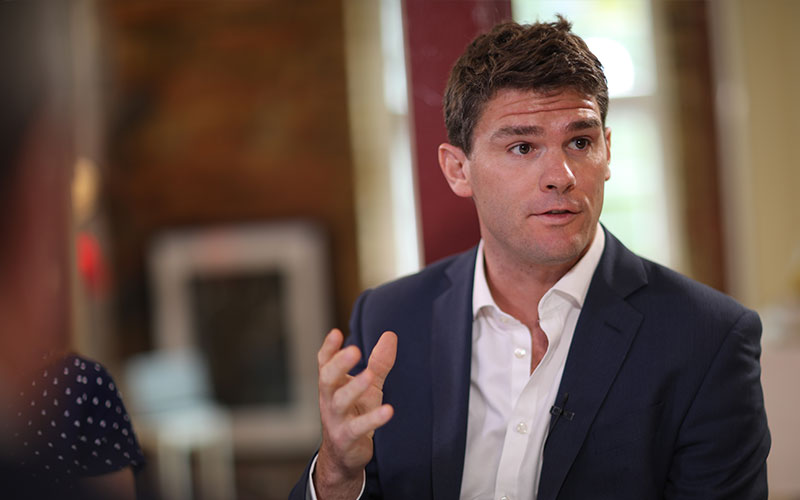Don’t fall for the common myths and misunderstandings of alternative investments
The world of alternatives cannot be treated in a homogenous fashion. It is extremely broad, and requires investors to do research into each particular strategy.
From hedge funds to private equity and real estate, alternative investments can form a fundamental part of almost every investor’s portfolio as a way of protecting it from market extremes or volatility. But while alternative investments have been one of the fastest growing asset classes over the past decade, much of the world of alternatives is still shrouded in myths and misunderstanding.
One of the most widespread public misconceptions is that common alternative investment tools such as hedge funds are only available to wealthy institutions and the ultra-rich. As a result, many managers commonly find themselves perceived as big spending, larger than life caricatures, closer to the Hollywood film Wolf of Wall Street than reality.
‘I remember a few years ago I was going to see a local authority client, and I’d been asked to do a training session on hedge funds to their trustees,’ recalls Alex Orr, a director within BlackRock’s alternatives specialists team. ‘I would say that a lot of their financial knowledge came from the Daily Mail. I was being presented as this hedge fund manager who drove Ferrari’s, drank champagne and was a massive gambler. What it really brought to life was the day-to-day perception of the hedge fund and absolute return industry.’

Kelli Byrnes, consultant within BlackRock’s portfolio analysis and solutions team
Transparency and simplification
Such myths pervade into the general understanding of alternatives themselves, particularly with the perception that many strategies are highly risky and complex, rather than being important sources of diversification. ‘They’re actually designed to protect capital and to limit market exposure,’ says Orr. ‘Of course, there are situations that get headlines that warrant a lot of criticism. But I think the vast majority are designed to diversify and to protect capital, to think about the downside, and to have a greater role in the portfolio.’
In addition, there is a tendency among clients to perceive alternatives as being opaque and non-transparent, myths managers often find they have to address. ‘We steer away from the strategies that are least transparent, and within our long/short allocations, we get full portfolio transparency on a monthly basis,’ says Jessica Milsom, senior associate at Stonehage Fleming. ‘So that’s definitely a myth we think has been dispelled.’
One of the biggest challenges for many alternatives managers is to educate the client base that instead of being a single asset class, the world of alternatives is extremely broad and cannot be treated in a homogenous fashion. Each type of alternative investment requires investors to conduct detailed research to fully understand what they are getting in terms of liquidity, diversification and return.
‘It isn’t just about relying on some guru in Mayfair or Greenwich. It’s actually about owning cashflows that provide you a return.’
William Dinning, chief investment officer at Waverton Investment Management
‘The myths tend towards all alternatives being a single strategy, or all being illiquid or all being diversifiers,’ says Kelli Byrnes, consultant within BlackRock’s portfolio analysis and solutions team. ‘There may be many that are set up that way, but the availability of information is certainly less than for traditional assets, and so being able to understand alternatives from a risk perspective can be more challenging. But the need to understand them is a way of debunking that myth.’
Rather than being the preserve of the rich and elite, William Dinning, chief investment officer at Waverton Investment Management, views alternative investments as a means for smaller investors to access a lot of significant asset classes that have traditionally only been available to institutional investors. While hedge funds are often the first type of alternatives that spring to mind, Dinning believes the future actually lies in tangible assets linked to the trends and technologies of the future.
‘The alternatives universe is a lot bigger and broader than just hedge funds,’ he says. ‘It isn’t just about relying on some guru in Mayfair or Greenwich. It’s actually about owning cashflows that provide you a return. That’s the part that interests us the most, not financial engineering. A lot of this includes things you can see out of the window. In the case of a toll road you’re driving along or an aeroplane you’re flying on, it’s thinking about who owns it, and how they are making money from that. A lot of those markets are very deep, and being able to access them in new vehicles is how alternatives should be considered.’
At the same time, it remains important to explain to clients that while alternatives can represent exciting new opportunities, they are no magic bullet solution, and extracting most out of these investments requires choosing the right alternative for the right situation.
‘The perception among the public is that they’re silver bullets, that they’re a one stop shop and they’ll do everything for everyone in every situation,’ says Shane Balkham, chief investment officer at Beaufort Investment. ‘That’s probably the biggest myth. You have to peel back the onion and explain each different layer, what different funds you can have in there, and that no alternative is going to be exactly the same as another one.’

Diversification: which alternative investments to use and use together?





